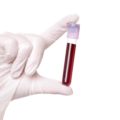
Recently on this blog, we talked a bit about why you might need to visit with an allergy specialist based on a number of allergy or asthma symptoms. In that post, we mentioned that over 50 million people in the United States have asthma or allergies, according to the Centers for Disease Control and Prevention (CDC), but science is yet to find a cure all for the various symptoms of allergies and asthma.
But deciding to go to an allergy evaluation and being prepared for it are two different things. Knowing what to expect when entering your appointment is key to having everything together for a successful diagnosis. Here are a few things you should know about your initial visit to the allergy specialist.
What happens during a visit?
During your scheduled appointment, an allergist will evaluate your lifestyle, activities, hobbies and recent trips or vacations to determine what might be triggering your symptoms. They will also take a family history for allergies and a physical exam. These professionals can also offer unique insight into the best products for allergy control and prevention that you can incorporate into your daily life for day-to-day relief. They may also recommend that you undergo some simple allergy tests to determine your exact triggers so they can offer advice on how to best minimize your exposure to those elements.
What kind of testing should I expect?
There are two primary types of allergy skin testing that are used to determine the environmental and edible substances that cause a reaction. The first, the skin prick test, is usually the first step in the process. These tests are highly sensitive, and tend to be effective in determining the exact factors that affect your symptoms.
"While the "skin prick test" sounds like a scary prospect, the test is relatively painless and no blood is drawn," writes Julie Kuriakose, M.D. in an article for the Huffington Post. "It is the most common test used to identify IgE antibody mediated allergies. During the test, the allergist will place diluted amounts of suspected allergens on the skin. A series of small pricks or scratches allow the solution to enter the skin. In an allergic person, a raised bump or wheal will develop at the test location on the skin. A positive reaction will generally take around 15-20 minutes to develop."
The other popular test is the patch test, which is generally used to identify cosmetics, lotions, jewelry, hair dye, medication or some type of preservative that may be causing a reaction. This type of assessment uses a patche that contains a substance that falls under one of the aforementioned categories. The patch is placed on a person's skin for 48 hours, at which point the patch is removed and the skin is examined for redness or irritation.
What can I do to prepare for my appointment?
Some great ways to prepare are to keep a symptom diary which outlines the times of the day that you suffered irritation or nasal congestion, what environmental or other factors you came in contact with that may have triggered your attack and the things you took or used to alleviate the symptoms. It will also be helpful to bring previous medical records with you for the specialist to look at. Also, call ahead to your doctor's office to determine if their are any special instructions for your visit. They may ask that you stop taking antihistamines in order to yield the best results from the testing.
When it comes to alleviating allergy symptoms, making sure that you have all the allergy control products and the medical information that you need to make an informed assessment of how to best care for yourself is key. If you are interested in any of our products for a healthy lifestyle, contact Allergy Be Gone today.









